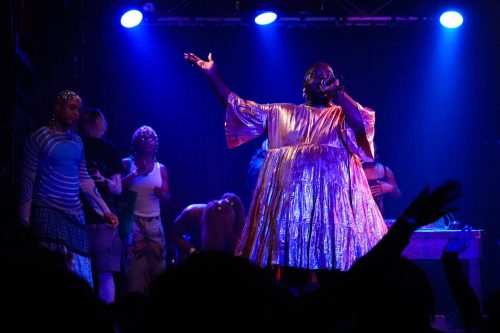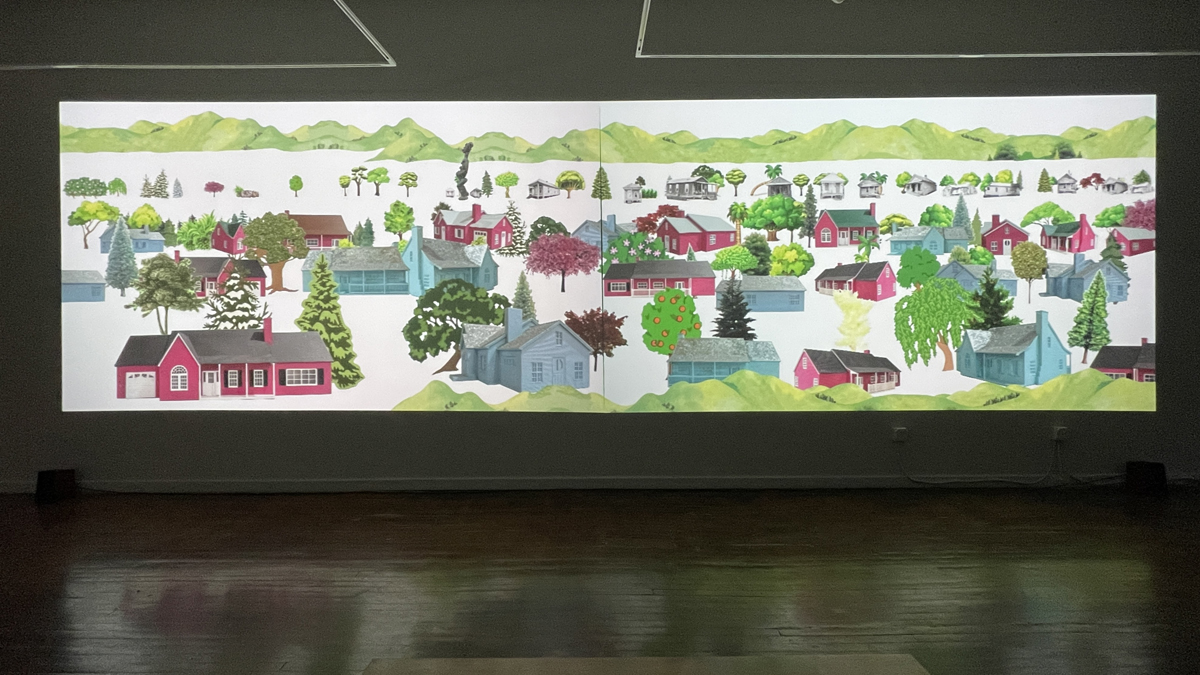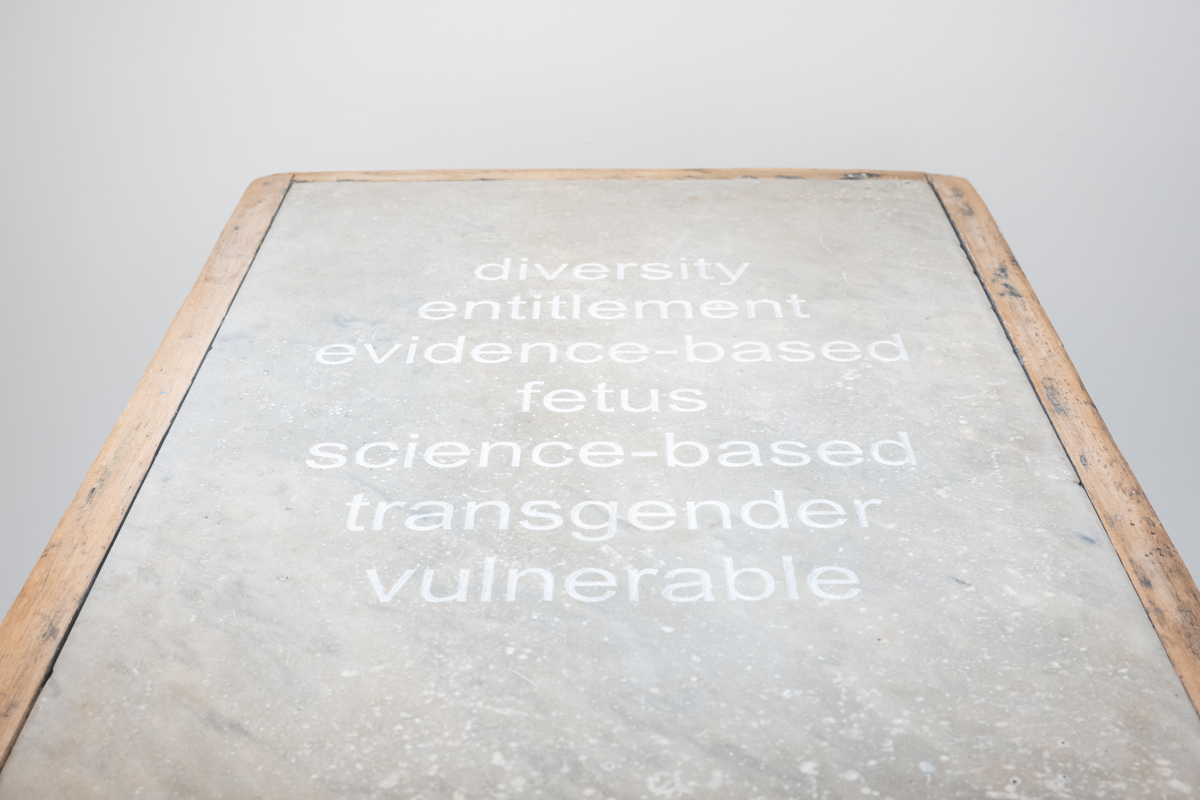Zoë Charlton: Smokey Hallow at Maryland Art Place
On view until March 18, 2023
Zoë Charlton’s Smokey Hallow is a spirited and moving homage to the titular African-American community, Smokey Hollow, in Tallahassee, FL. The solo exhibition, hosted at Maryland Art Place, feels welcoming and meditative while the narrative, centered around the repeating motif of a found wooden statue, traverses animation, printmaking, and sculpture to remember a sacred community that was eliminated by urban renewal, and to imagine future safe havens.
Viewers may be familiar with Charlton’s practice from her works on paper and recent installation, “Permanent Change of Station” at the BMA as part of A Movement in Every Direction: Legacies of the Great Migration, which combines her signature drawing style with landscape images gathered from popular culture.
At MAP, the Charlton’s work on paper include three screen print collages, “Rendition (Suburbs)”, “Rendition (Barren),” and “Rendition (Starry Night),” which are tucked into an intimate viewing space off the main gallery. As I “read” these from left to right, they function simultaneously like a re-birth and a cycle. Each subtly depicts a suburban landscape growing barren with the image of “Sib (Ipseity),” a sixty-inch African wooden statue of a pregnant Black female figure, the key recurring motif of the exhibition, stands in the center hugging a toy-sized castle to her chest.
The screen prints have an undertone of longing as the statue tightly holds the fairytale-esque relic, a representation of an ideal of bliss within a thick layer of trees. The prints stare back at the viewer as if they were here to give a prophecy. The numerical significance of three could be a reference to the birth, life, death, cycle or the connections of body, mind and soul and the spirit present in Sib.


















